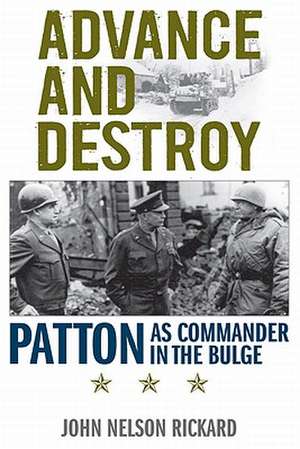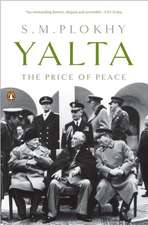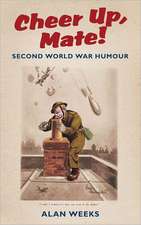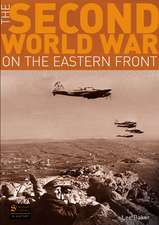Advance and Destroy: Patton as Commander in the Bulge: AN AUSA Title, American Warriors Series
Autor John Nelson Rickard Roger Cirilloen Limba Engleză Shrink-wrapped pack – 30 sep 2011
In Patton as Military Commander in the Ardennes, John Nelson Rickard corrects the many myths and misperceptions surrounding Patton, providing the first comprehensive analysis of Patton's generalship in the Battle of the Bulge. According to Rickard, "the requirement to maneuver and fight hard, and the temporary and rough parity of the opposing sides makes the Battle of the Bulge the ultimate case study of Patton's generalship." The Battle of the Bulge (December 16, 1944-January 25, 1945), also known as the Ardennes Offensive, was a major German offensive, launched toward the end of the war in the region of the Ardennes Mountains in Belgium. This was Hitler's last great gasp, and he deployed 300,000 troops with the hope of neutralizing the Western Front, splitting the Allied forces, and forcing the Americans and British to settle for a separate peace independent of the Soviet Union. Many historians have argued that Allied reinforcements, including General George Patton's Third Army, were instrumental in smashing Hitler's final push and securing Allied victory.
Previous work on Patton has focused on the Third Army's link up with the 101st Airborne Division at Bastogne. But Rickard argues that Patton directed multiple corps operations for a full month after breaking through to Bastongne and that these operations have been overlooked. Because many historians have not carefully considered the commander's decision-making process, Rickard employs an "estimate of the situation" methodology, based on the mission, the means, the conditions, and the probable effects of various lines of action on future operations. Our second reader praises Rickard for investigating Patton's use of intelligence, specifically ULTRA, which was the designation used by the British for signals intelligence obtained by "breaking" high-level encrypted enemy radio and teleprinter communications. Thus Rickard offers not only a groundbreaking analysis of military command, but also a new look at one of America's most controversial and colorful figures.
John Nelson Rickard is a Captain in the Canadian Armed Forces and has a Ph.D in military history from the University of New Brunswick. He currently serves at the Directorate of Army Training, in Ontario, Canada. He is the author of Politics of Command: Lieutenant-General A.G.L. McNaughton and the Canadian Army, 1939-1943 and Patton at Bay: The Lorraine Campaign, September to December 1944.
| Toate formatele și edițiile | Preț | Express |
|---|---|---|
| Paperback (1) | 236.11 lei 6-8 săpt. | |
| University Press of Kentucky – 3 aug 2018 | 236.11 lei 6-8 săpt. | |
| Shrink-wrapped pack (1) | 255.68 lei 6-8 săpt. | |
| University Press of Kentucky – 30 sep 2011 | 255.68 lei 6-8 săpt. |
Preț: 255.68 lei
Nou
Puncte Express: 384
Preț estimativ în valută:
48.95€ • 50.88$ • 40.58£
48.95€ • 50.88$ • 40.58£
Carte tipărită la comandă
Livrare economică 06-20 februarie 25
Preluare comenzi: 021 569.72.76
Specificații
ISBN-13: 9780813134550
ISBN-10: 0813134552
Pagini: 490
Dimensiuni: 161 x 232 x 42 mm
Greutate: 0.93 kg
Editura: University Press of Kentucky
Seriile AN AUSA Title, American Warriors Series, American Warriors
ISBN-10: 0813134552
Pagini: 490
Dimensiuni: 161 x 232 x 42 mm
Greutate: 0.93 kg
Editura: University Press of Kentucky
Seriile AN AUSA Title, American Warriors Series, American Warriors
Notă biografică
Descriere
Descriere de la o altă ediție sau format:
Explores the General George S. Patton's operational performance during the entire Ardennes campaign, through his "estimate of the situation", the US Army's doctrinal approach to problem-solving. Patton's day-by-day situational understanding of the Battle of the Bulge gives readers an in-depth, critical analysis of Patton's overall effectiveness.
Explores the General George S. Patton's operational performance during the entire Ardennes campaign, through his "estimate of the situation", the US Army's doctrinal approach to problem-solving. Patton's day-by-day situational understanding of the Battle of the Bulge gives readers an in-depth, critical analysis of Patton's overall effectiveness.








